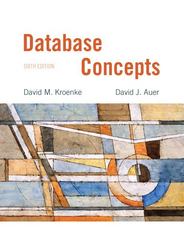Question
Summary: -------- Given: You are given a Python Class template. In this class there is a class variable vector, is a list of N non-negative
Summary:
--------
Given: You are given a Python Class template. In this class there is a
class variable vector, is a list of N non-negative integers and are
stored (in positions 0, 1, 2, ... (N-1)), where at least one integer
is 0.
Task: Write a recursive function "findAllPaths" to find all possible
path through V starting at position 0, and ending at
the location of 0, in accordance with the Rule below. If no such path
exists, "paths" should be an empty list. The "findAllPaths"method also
must find the longest path and shortest path from your "paths" list.
You also have to write functions called "getShortest" and "getLongest"
which return respectively the shortest and longest paths as lists.
Rule: From position i, the next position in the path must be either i+x,
or i-x, where x is the non-negative integer stored in position i.
There is no path possible from position i to position i+x if
either of these 2 conditions hold:
position i+x is beyond the end of V.
position i+x is already on the path.
There is no path possible from position i to position i-x if
either of these 2 conditions hold:
position i-x is beyond the start of V.
position i-x is already on the path.
Example:
Suppose V contained the following:
Position: 0 1 2 3 4 5 6 7 8 9 10 11
Integer: 2 8 3 2 7 2 2 3 2 1 3 0
Then one path is:
0 2 5 7 4 11
i.e., you could get from position 0 to position 11 of V by
following the path of positions: 0 2 5 7 4 11
Note that other paths also exist, such as:
0 2 5 3 1 9 8 10 7 4 11
Recursive Algorithm
-------------------
Your solution MUST use a recursive function to identify the paths.
You must implement the recursive function, as follows:
def findAllPaths(self, position, solution):
"findAllPaths" takes the initial part of a solution Path, and
a potential next solution position in the Vector. It explores
paths with the given position appended to the given solution
path so far.
The class variable paths is a list of lists and the function
Approach:
--------
It will be helpful if you do NOT try to write the complete
findAllPaths at once, but, instead, start off with a simple
prototype, get it working, and then incrementally add functionality
to the prototype until you arrive at the completed assignment.
For example:
1. Start off with a prototype "findAllPaths" that simply returns 0
if NO solution path exists, and returns 1 if ANY solution path
exists. This prototype does not keep track of the solution
path. This prototype simply returns 1 the first time it
encounters position who's value is 0 in its explorations.
This prototype has only 2 parameters: position and V.
2. Modify "findAllPaths" to keep track of the solution path found
in part 1 above. Add parameter Solution, and store this
solution path in it. "findAllPaths" returns similarly to
prototype 1 above, except its caller will find a solution
path in the Solution parameter. Add additional parameters
to "findAllPaths" as necessary.
3. Modify "findAllPaths" to continue exploring after the a solution
path is found. The trick is to force the recursion to
keep going even after it finds a solution. It returns only when every
path has been explored (following the Rule).
Example Run:
------------
Example vector: [2, 8, 3, 2, 7, 2, 2, 3, 2, 1, 3, 0]
Valid paths:
0 2 5 7 4 11
0 2 5 3 1 9 10 7 4 11
0 2 5 3 1 9 8 10 7 4 11
0 2 5 3 1 9 8 6 4 11
No Solution example:
3 1 1 1 3 4 2 5 3 0
Some sample test is given in the template. The sample code only shows
the API of how your code should will be tested. You should add to it
to test code such that your lab solution account for all cases.
Step by Step Solution
There are 3 Steps involved in it
Step: 1

Get Instant Access to Expert-Tailored Solutions
See step-by-step solutions with expert insights and AI powered tools for academic success
Step: 2

Step: 3

Ace Your Homework with AI
Get the answers you need in no time with our AI-driven, step-by-step assistance
Get Started


